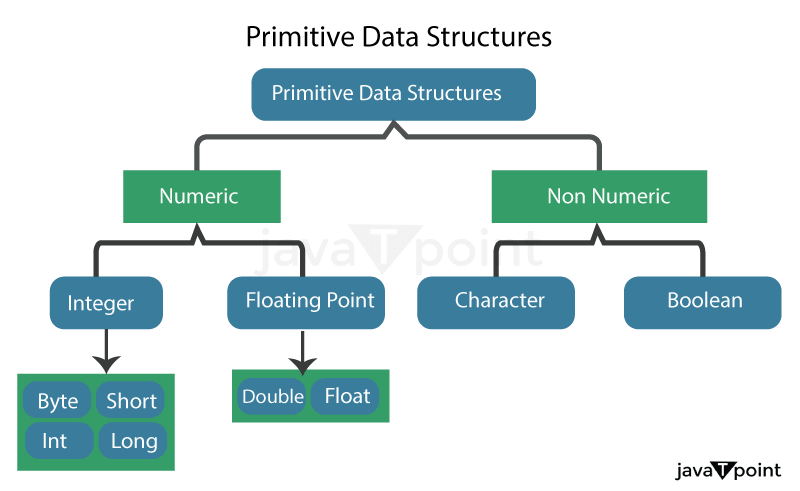Primitive Data StructureIntroduction:The foundation of every program is a primitive data structure, commonly referred to as a basic data structure. They are part of the computer language and are used to represent basic data kinds including numbers, characters, and Boolean values. What are primitive data structures?Primitive data structures, also known as basic data structures, are the building blocks of any program. They are used to represent simple data types such as numbers, characters, and Boolean values and are built into the programming language itself. In contrast to more complex data structures, such as arrays and linked lists, primitive data structures cannot be composed of other data structures. Instead, they are atomic and indivisible. This makes them simple to use and efficient in terms of memory usage and speed. Types of primitive data structuresThe most common types of primitive data structures include: 
In addition to these basic types, some programming languages may provide additional primitive data structures, such as byte (used to store a single byte of data) or short (used to store a small integer). Characteristics of primitive data structuresPrimitive data structures have several characteristics that make them different from more complex data structures, such as arrays or linked lists. These include:
Operations on Primitive Data StructuresPrimitive data structures support several operations that allow programmers to manipulate data. These operations include: Assignment Operations: The act of putting a value in a variable is known as an assignment. A value is assigned to a variable using the assignment operator "=". As an illustration, "x=5" gives the variable x the value 5. Arithmetic Operations: Arithmetic operations are used to perform mathematical calculations on numeric data types. Addition, subtraction, multiplication, and division are the four most popular arithmetic operations. Comparison Operations: Comparison operations are used to compare two values and return a Boolean value. The most common comparison operations include "equal to" (==), "not equal to" (!=), "greater than" (>), "less than" (<), "greater than or equal to" (>=), and "less than or equal to" (<=). Logical Operations: Logical operations are used to perform Boolean operations on Boolean data types. The most common logical operations include "AND" (&&), "OR" (||), and "NOT" (!). Advantages of Primitive Data Structures:
Disadvantages of Primitive Data Structures:
Conclusion:In conclusion, primitive data structures in C++ are crucial building blocks that enable programmers to effectively store and handle simple values. These data structures include of integers (int), floating-point numbers (float and double), characters (char), and booleans (bool). Whole numbers are represented by integers, while decimal values are represented by floating-point numbers. Characters represent individual characters, and booleans store logical values of either true or false. A common return type for functions that don't return any values is the void type, which symbolises the lack of a value. By understanding and utilizing these primitive data structures effectively, programmers can handle basic data operations in their C++ programs. These data structures form the foundation upon which more complex data structures and algorithms are built, enabling the development of robust and efficient software solutions. It's important to note that while primitive data structures are powerful, they have certain limitations. For instance, integers have a specific range of values they can hold, and floating-point numbers may have precision limitations. Consequently, it's essential to select the proper data structure based on the particular requirements of your program. |
 For Videos Join Our Youtube Channel: Join Now
For Videos Join Our Youtube Channel: Join Now
Feedback
- Send your Feedback to [email protected]
Help Others, Please Share









